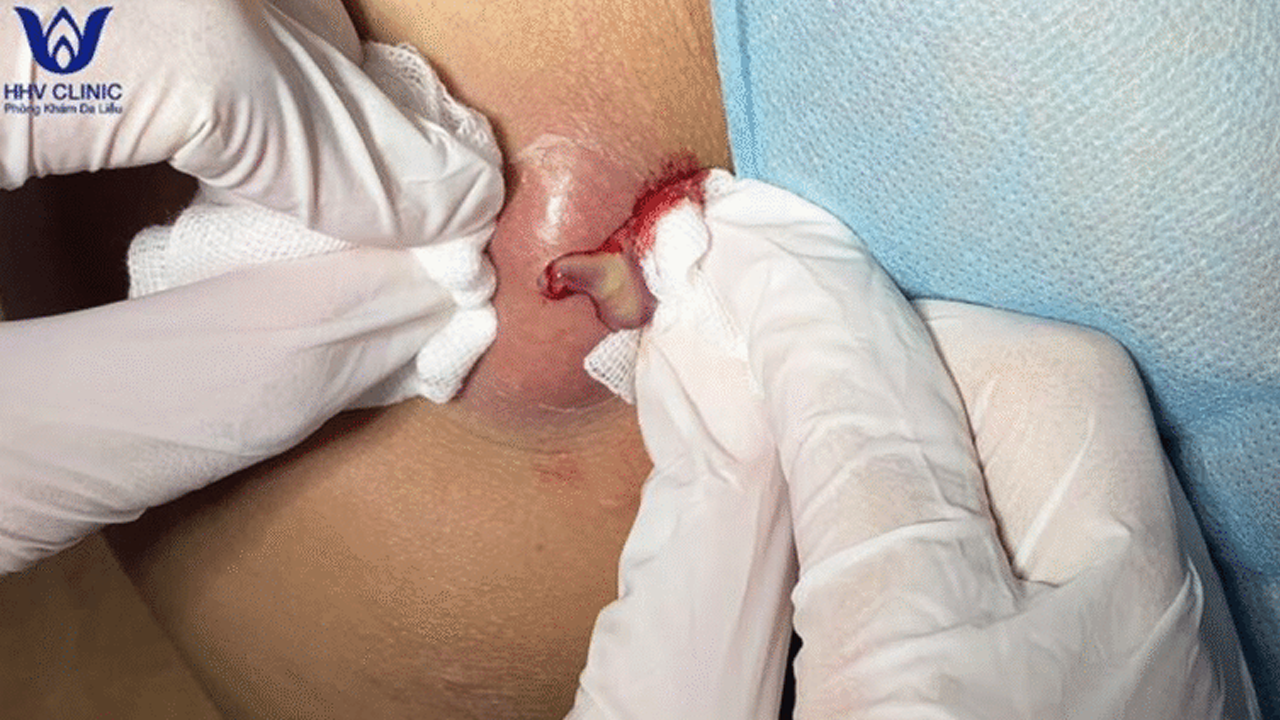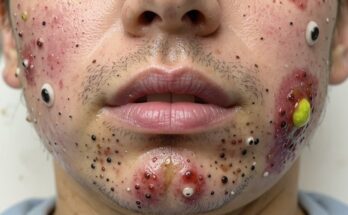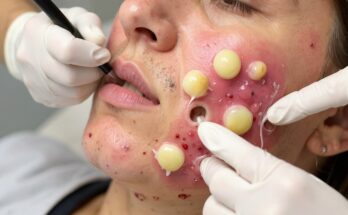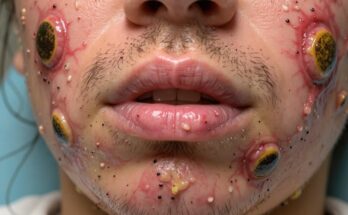Understanding and Conquering Cystic Acne: A Comprehensive Guide
Cystic acne is a frustrating skin condition, far more than just a typical blemish. This guide delves into the causes, effective treatments, and preventative measures to help you manage this challenging form of acne.
What Exactly are Cystic Pimples?
Unlike milder forms of acne, cystic pimples are large, deep, and incredibly painful. They form when pores become severely clogged with a combination of excess oil (sebum), dead skin cells, and bacteria. This blockage leads to significant inflammation and infection deep within the skin, resulting in those characteristic red, swollen, and tender lumps. Left untreated, these cysts can sometimes lead to permanent scarring, highlighting the importance of timely and appropriate management.
Unraveling the Mystery: Causes of Cystic Acne
Several factors contribute to the development of cystic acne. Understanding these causes is crucial for effective treatment and prevention.
Hormonal Fluctuations: A Major Player
Hormonal changes play a significant role. Increased androgen levels, common during puberty, menstruation, pregnancy, and conditions like polycystic ovary syndrome (PCOS), stimulate sebum production, leading to clogged pores and subsequent inflammation.
The Role of Genetics and Bacteria
Genetics can predispose individuals to cystic acne. A family history of acne significantly increases your risk. Furthermore, the bacteria Propionibacterium acnes thrives in clogged pores, exacerbating inflammation and infection.
Lifestyle Factors: Stress and Diet
While not always the primary cause, stress and diet can significantly influence acne severity. A diet high in processed foods and dairy, along with chronic stress, may worsen acne breakouts.
Skincare Habits: A Double-Edged Sword
Using comedogenic (pore-clogging) products or aggressively picking at pimples only worsens the situation. Harsh scrubbing and improper skincare routines can irritate the skin, further exacerbating inflammation.
Effective Treatments for Cystic Acne: A Multi-pronged Approach
Tackling cystic acne often requires a combination of strategies. Here’s a breakdown of effective treatment options:
Hands Off! The Importance of Avoiding Picking
Resist the urge to squeeze or pick at cystic pimples. This action spreads bacteria, increases inflammation, and dramatically increases the risk of permanent scarring.
Gentle Cleansing: The Foundation of Good Skincare
Cleanse your face twice daily using a mild, non-comedogenic cleanser. Look for cleansers containing salicylic acid to help unclog pores gently.
Topical Treatments: Targeting the Problem Directly
Several topical treatments can effectively combat cystic acne:
- Benzoyl Peroxide: This powerful ingredient kills acne-causing bacteria and reduces inflammation.
- Salicylic Acid: A beta-hydroxy acid (BHA), salicylic acid exfoliates the skin, unclogging pores and removing dead skin cells.
- Topical Retinoids (e.g., Adapalene, Tretinoin): These promote skin cell turnover, preventing clogged pores and reducing breakouts. While highly effective, retinoids can cause initial irritation.
Oral Medications: For Moderate to Severe Cases
For moderate to severe cystic acne, your dermatologist may prescribe oral medications:
- Oral Antibiotics: These reduce bacterial infection and inflammation.
- Oral Contraceptives: Can help regulate hormones in women, reducing sebum production.
- Isotretinoin (Accutane): A powerful medication reserved for severe cystic acne, requiring strict dermatologist supervision due to potential side effects.
Professional Interventions: When to See a Dermatologist
A dermatologist can provide more advanced treatments, including:
- Cortisone Injections: These injections directly into the cyst rapidly reduce inflammation and pain.
- Other Procedures: Depending on the severity and your skin type, your dermatologist might recommend other treatments like chemical peels or laser therapy.
Home Care Strategies: Supporting Your Treatment
While not a replacement for professional care, some home remedies can offer supplemental relief:
- Ice Compresses: Applying ice wrapped in a cloth can reduce swelling and pain.
- Spot Treatments: Products containing sulfur or tea tree oil may provide mild anti-inflammatory benefits. Use with caution and always perform a patch test.
Preventing Future Breakouts: A Proactive Approach
Preventing future cystic acne involves a combination of consistent skincare, lifestyle adjustments, and a healthy dose of self-care.
- Consistent Skincare Routine: Establish a regular routine using oil-free, non-comedogenic products.
- Sunscreen Protection: Always apply broad-spectrum sunscreen to protect your skin and prevent sun damage.
- Stress Management: Find healthy ways to manage stress, as it can exacerbate acne.
- Dietary Considerations: A balanced diet may help minimize breakouts.
- Regular Dermatologist Visits: Regular check-ups can help monitor your skin and address potential issues early.
Remember, consistent effort and a holistic approach are key to effectively managing and preventing cystic acne. Don’t hesitate to seek professional help from a dermatologist, especially if your acne is severe, persistent, or causing significant distress.



